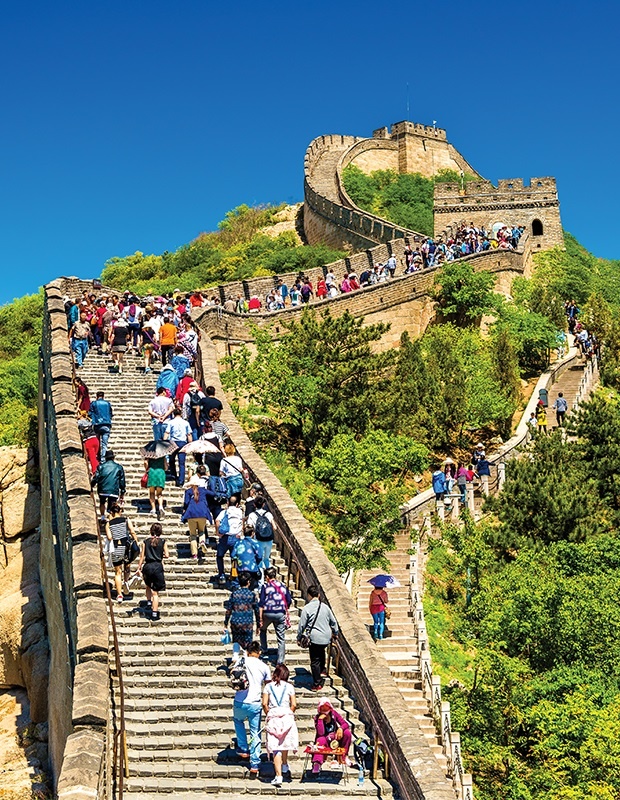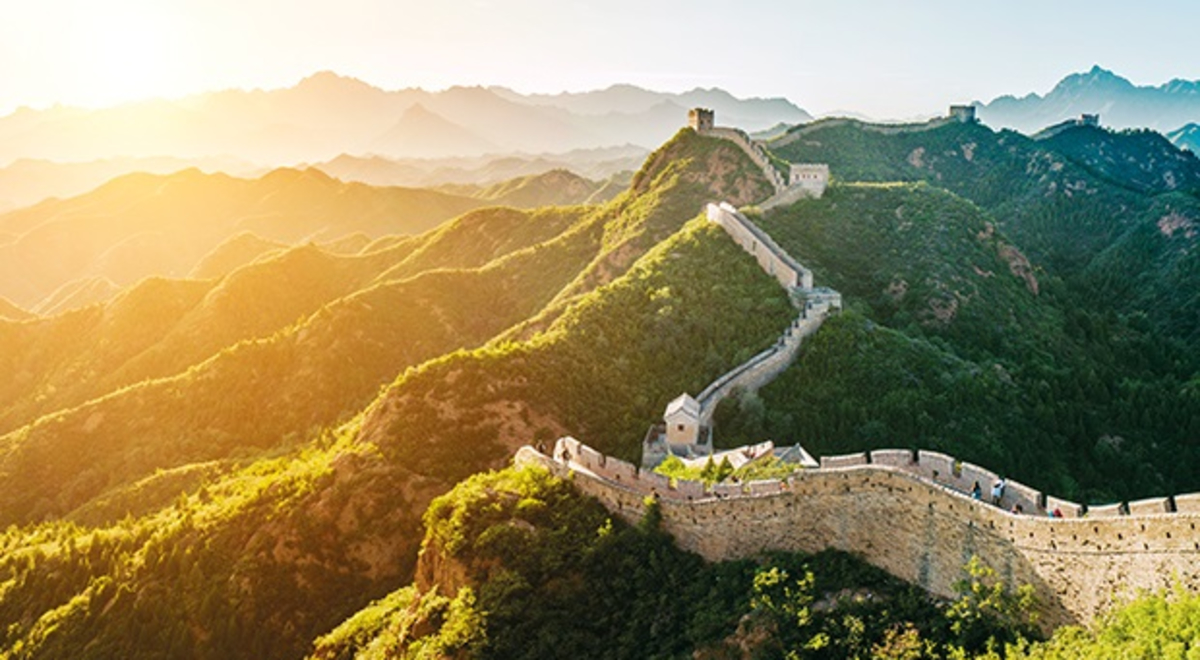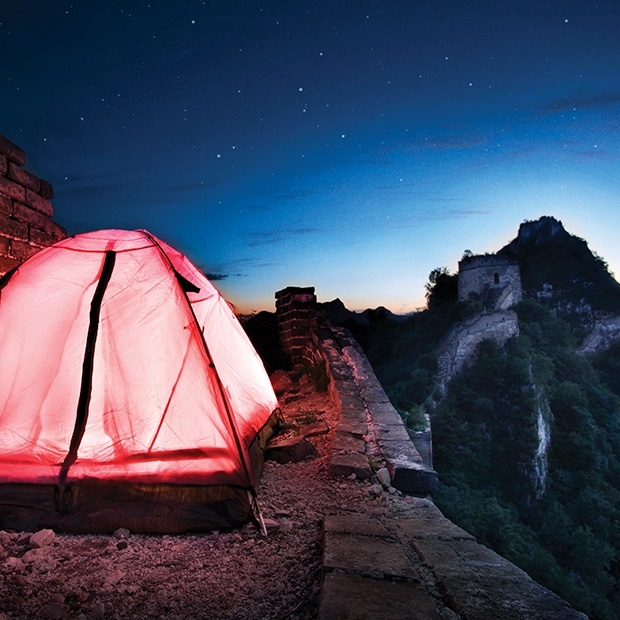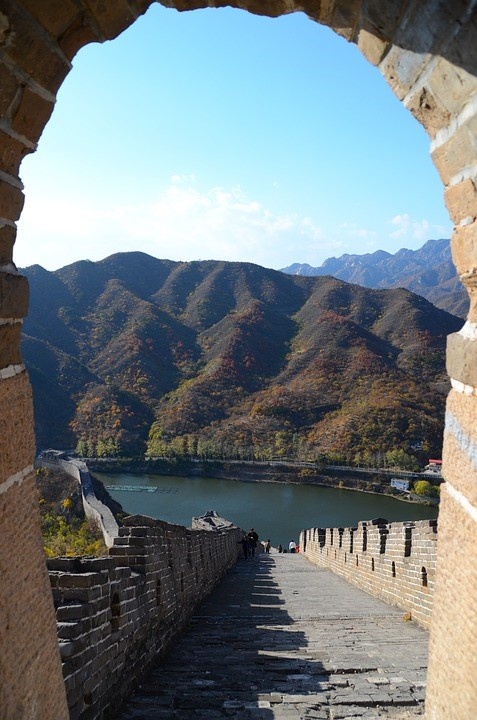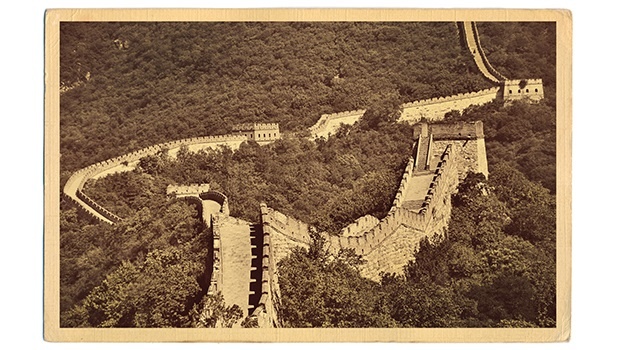Did you know that The Great Wall of China allows overnight camping, holds an annual marathon race and has sunken sections you can scuba dive?
That’s right. China’s iconic Great Wall may have been built for fortification some 2,700 years ago, but today, it can be enjoyed in a myriad of ways, over and beyond the typical escorted tour. The longest man-made structure in the world, equal to half the length of the Equator, longer than the diameter of Earth’s moon, and more than twice the diameter of Pluto, is now more accessible than ever.
During the Cultural Revolution (1966 – 1976), the once sacred wall was pillaged. Bricks were used in building peasant homes, farms and reservoirs, and today, nearly a third of the wall is gone. Strangely, regulations on its conservation weren’t imposed until 2006.
Since then, it has been illegal to remove bricks, earth and stones, and to plant crops in its general vicinity. Vandalism of any kind, including graffiti, is punishable, but camping, diving, and running on certain sections of it is allowed, transforming it from a once menacing symbol of division and protectionism to a whole pile of fun.
For most, it’s enough to take in the wall’s awe-inspiring grandeur on a day tour of Badaling (less than an hour from Beijing), Juyong Pass, or the steep and winding Jiankou section of the wall, the most photographed for books and postcards. Others want more.
While a group tour is fun, if you’re looking for an extraordinary experience on the Great Wall, think hiking, overnight camping, racing, and even scuba diving it instead.
Hiking & Overnight Camping on The Great Wall
Imagine being the only one in sight at the Taj Mahal, Angkor Wat or at any other heavily-visited attraction. There is nothing more exotic, and if not already, this should be on your travel bucket list.
To beat the crowds at the Great Wall, head to the more remote sections, like those around Gubeikou. Getting there from Beijing using public transport isn’t difficult or expensive but it takes 4-5 hours. Once there, pay a small park entrance fee to access The Wall and surrounding area, including an ancient village perfect for a quick lunch. If you're not sure you want to trek alone, make sure you look into great wall of china tours which often cover a variety of activities.
From the village, follow the signs to The Great Wall and prepare to be wowed. Most sections of The Wall most popular with tourists (around Badaling) have been restored, and are generally 400-600 years old. Around Gubeikou, The Wall is older, somewhat dilapidated, at times dangerous, and utterly magnificent.
A breathtaking two-hour hike will take you past numerous watchtowers and countless jaw-dropping panoramic vistas, often without a soul in sight. If you have a tent, set up camp in any of the watchtowers. If you don’t, head back to the village and grab a room at one of the guest houses.
If you can swing it, camp it. There is nothing like waking up to the whistling wind, songbirds, and the rising sun alone, at a site visited by up to 70,000 tourists daily. Just make sure you bring all your trash back with you at the end of your stay.
The Great Wall Marathon Race
Marathoners, it doesn’t get better than this. Athens may be legendary, Boston iconic and New York City a must, but how many runners can say they’ve raced on the Great Wall?
Since 1999, the Great Wall Marathon has been held in May each year, and is deemed one of the world’s most demanding races. Runners can choose from the 8.5km Fun Run, or a Half (21.1km) or Full (42.195km) marathon. The race begins at the Yin and Yang Square in the Huangyaguan fortress and takes participants through the lower valley and its villages as onlookers enthusiastically cheer racers on.
The spring weather can be challenging too, and has varied from a low of 16C to highs of 35C on race days. When it's hot, the humidity can be tough. This year’s event was a sellout with 2,500 runners from more than 50 countries competing.
Diving the Underwater Great Wall of China
Looking for something completely different? Few divers can say they’ve dived the world’s longest wall and largest ancient architecture project ever, but you can!
The Great Wall is not one continuous wall; it consists of overlapping walls, trenches, watchtowers, fortresses and barracks, and is broken up by natural barriers like mountains and rivers. It covers many types of terrain, from beaches (Quinhuangdao) and rugged mountains (around Beijing) to desert, and some of it is even sunken.
In the Panjiakou Reservoir, less than 3 hours from Beijing, certified divers can dive an underwater section of the wall, submerged during the construction of a dam in 1977. From a peak overlooking the reservoir, what’s left of the wall can be seen disappearing into the water, only to reappear to cross a small island before dipping below again. Diving here requires the expertise of a good dive company, specializing in diving the Great Wall.
More than 1,300 feet of The Wall is below the surface, sitting anywhere from 5-20 meters (16-65ft) underwater. The experience has been described as eerie and intimate, with limited visibility and chilly conditions challenging but worth it. The reservoir has only a couple of species of fish and freshwater shrimp, leaving the highlights to swim-through passages, a guard tower and uniquely built sections seldom found elsewhere.
And of course, the novelty of it all.
Great Wall Quick Facts
- The Great Wall of China averages around 50 million visitors per year.
- It crosses 9 provinces & municipalities, officially 21,196.18 km (13,170.7mi) long.
- Only placed on the World Heritage List by UNESCO in 1987.
- During the Qin Dynasty (221-206 BC) glutinous rice flour was used as mortar to bind the bricks of the wall.
- The Wall was built by Chinese soldiers, forced peasants, convicts and POWs, totalling 1 million workers. It is estimated that up to 400,000 workers died on the job, with some buried inside the wall.
- The northwestern sections (Gansu & Ningxia provinces) are likely due to disappear in the next 20 years due to desertification, general weathering and vandalism.
Grab your ticket to adventure for as little as $627, round-trip, all taxes included. Our flights to Beijing are on sale now! Book online, by phone or by visiting us at a Flight Centre store location near you.
